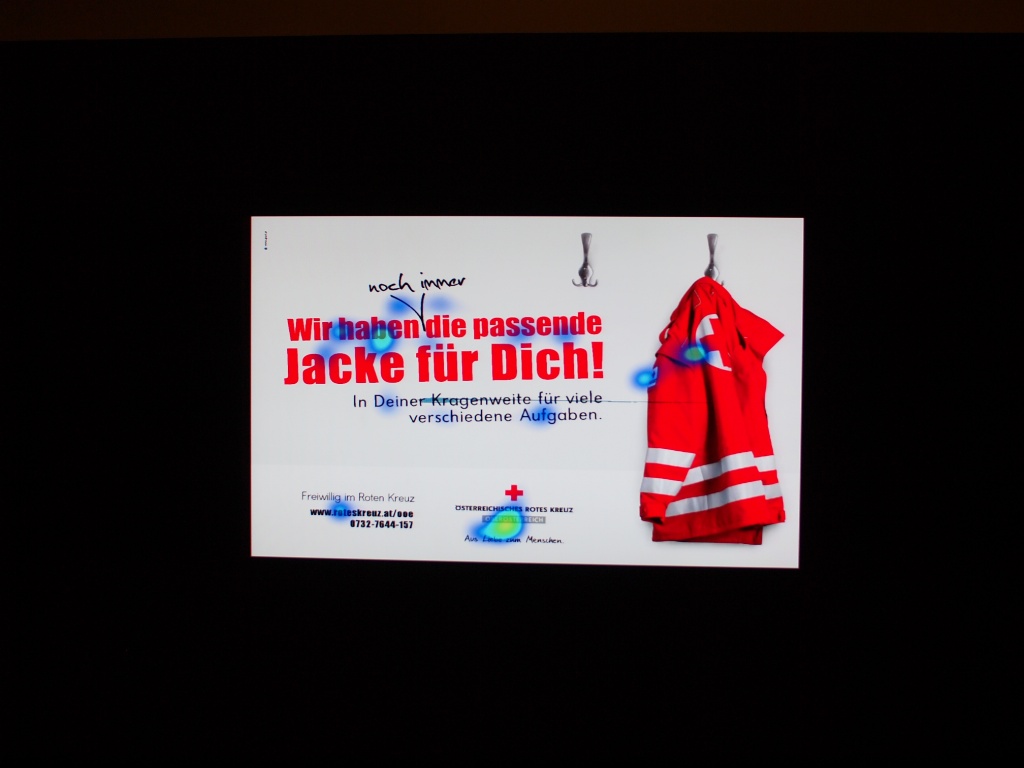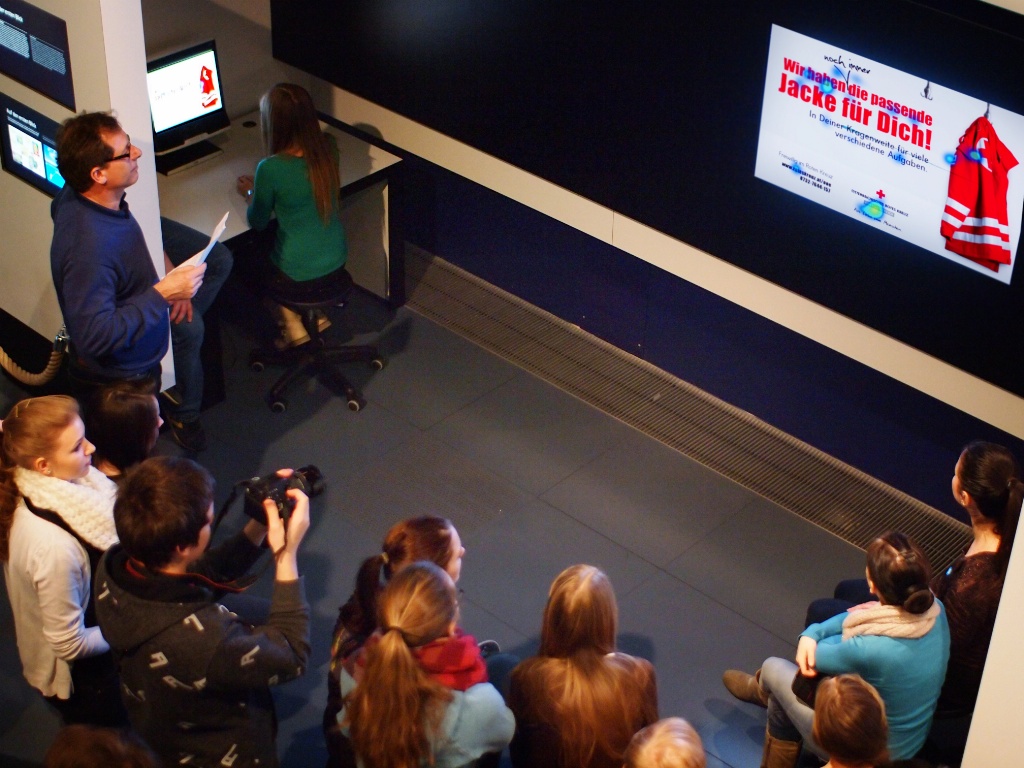The human brain is a tough nut to crack. Scientists have long been at work decoding what makes us tick, what determines our thoughts, how our thinking functions and how we can influence it. They’ve pursued a variety of approaches, but the more they discover, the more the ultimate goal—actually being able to comprehend the brain as a whole—seems to slip further and further away. Nevertheless, a good deal of tangible progress has been made, including the development of tools that facilitate our understanding of partial processes. One of these tools is eyetracking, which can be used to determine what a person concentrates on when looking at a particular image, to which points his/her eyes wander. From this information, conclusions can be drawn—which colors are most eye-catching; which typefaces stand out on posters; how information can be designed so that it can be absorbed as quickly and correctly as possible by the largest number of people.
Recently, teacher Franz Etlinger and his students at the HLW commercial school in Steyr, Austria took advantage of this technology. Since the class’ curriculum is heavily focused on marketing and advertising, it was decided to get a bit of real-world experience and use vision heatmaps to investigate the actual billboards used by major organizations to promote their products and services, and to see which ones really get the word out and which aren’t communicating loud and clear.

For their project, they requested advertising posters from a wide array of enterprises. It made no difference which sector the organization was in. The aim was to use eyetracking to ascertain the effectiveness of the campaign—regardless of whether it was for the Red Cross, a chain of hair salons, a company that manufacturers high-tech windows, or a group that helps people with AIDS.

The posters were prepared for the Eyetracker in the Ars Electronica Center’s BrainLab, and then viewed by the students, one after the other. As they did so, two cameras monitored the movements of their eyes, registered which portions of the image they looked at, and how long their glance remained on a particular point.
Then, the data gathered was used to generate a so-called heatmap, which slightly resembles a weather chart—the longer the viewers fixated on a point, the “warmer” it’s depicted.
The result is an indication of whether the information and messages an advertiser would like to convey actually become the center of viewers’ attention, or if more striking elements divert attention from the main message.

Eyetracking isn’t only used to assess advertising, of course; it plays a role in numerous areas of cognitive psychology. And the BrainLab showcases other applications too.
For the students at HLW Steyr, the BrainLab and the technologies in use there represent admission to the realm of real-world practice. These students provided the results of their study to the organizations that had made ad posters available. Thus, even while still in school, these youngsters are working in a professional context and gaining valuable insights for their future career choices.